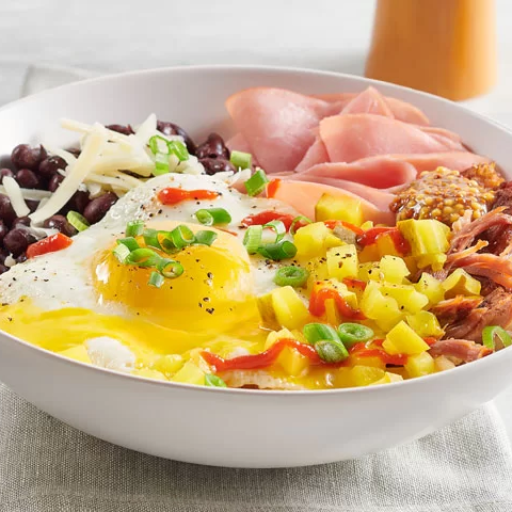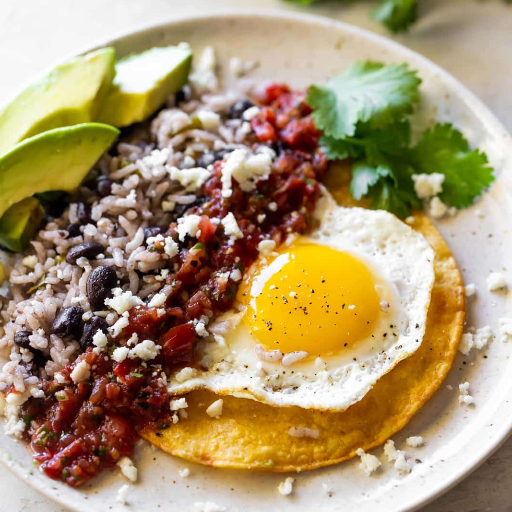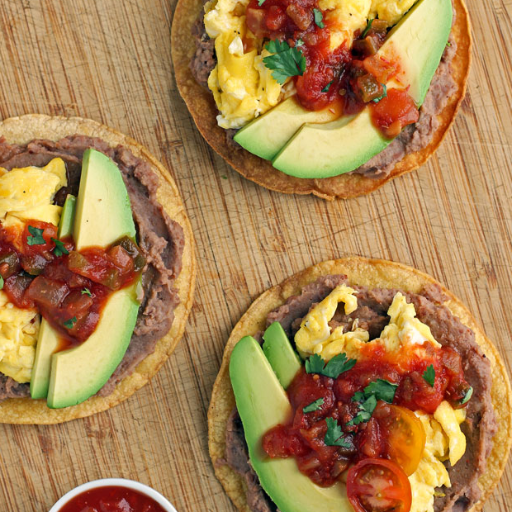One way to spice up your morning is to prepare and eat real Cuban breakfast recipes because they are incredibly varied and full of flavor. In this blog, we help ourselves to a beautiful tour ‘through the mouth’ of the Cuban people, this time enjoying the traditional cuisine that is cherished on the island and in Cuban communities worldwide. From the preparation of the classic café con leche to indulgent servings of huevos a la habanera, these meals offer sustenance and cultural immersion woven into the rich history of the people and their traditions. These practices are useful whether one wishes to capture the taste of Cuba remotely or is simply excited to broaden their boundaries of culinary practice as these genuine recipes will provide comfort, satisfaction and warmth of the tropics to one’s morning.
What Makes a Traditional Cuban Breakfast?

Different Variants of Cuban Coffee
At the Cuban breakfast table, a typical item in any Cuban meal, is coffee, but in doing so, the strong aroma fills the mouth. It comes from a strong and dark espresso type which can intermediately be classified as montado, or more of café con leche since it is most commonly added with steamed milk. Not only does this suit the spread of the breakfast while extending its range of flavors, but it describes how a typical Cuban approaches his coffee; Strong, sweet, and rich in flavors to energize the day.
The Cuban Roots in the Construction of Breakfast Dishes
Breakfast dishes are also products of Cuban culture which emphasizes sharing, straightforwardness, and rich taste. Breakfast foods such as café con leche, or mocha with toasted bread are meant to be consumed while together enjoying conversations with others. In the same vein, the practice of using locally grown produce epitomizes the Cuban custom of enhancing flavors without too much effort which makes breakfast a showcase of culture as well. It is the sociocultural and active aspects of the Cuban way of life that makes breakfast enjoyable as well as – an energizing prelude to the rest of the day.
How to Make a Perfect Cuban Breakfast Sandwich?

Ingredients necessary for making a classic Cuban Sandwich.
For the preparation of a Cuban breakfast sandwich right, get ready the following components Cuban bread, sliced ham, trolls pork, Swiss cheese, gherkins, and mustard. These components encapsulate the essence of a classic Cuban sandwich consisting of numerous layers which have their own unique savor and a crisp finish on the sandwich for satisfaction.
Best Tips for Grilling your Cuba ham and cheese sandwich as a classic Cuban breakfast type dish
To create the best sandwich for breakfast, try and use a sandwich press (that is well heated), or use a heavy skillet that is pressed from above to gain equal heat for the entire sandwich. During the cooking process, please also apply light pressure to the sandwich for some time and hope to achieve a perfect golden crust while infusing pure flavors. It would also be advised, as best practice, to butter the side that shall be placed down while grilling; this adds a layers richness of texture. It would be best to grill on medium heat to avoid the bread burning but allowing sufficient time for the cheese to melt and incorporate fully. These tips are provided to help recreate the strong flavors and textures that complement each other making an unforgettable sandwich perfect for breakfast as well as and a Cubans homage.
What Are Some Easy Cuban Breakfast Ideas?

Hurry Up, There’s Zesty Cuban Breakfast in Less Time
If you are craving for a quick and easy authentic Cuban breakfast, then go for a plate of tostada smeared in butter and jam along with a cup of café con leche, as it is both traditional and efficient. Alternatively, you can have tostones which are fried plantain slices served together with scrambled eggs for a heartier meal. If your craving is for something sweet, guava pastries, pastelitos de guayaba, are an excellent treat that combines a soft-baked pie with a guava filling that is easy to bite when you are on the go. These uncomplicated options convey the spirit of Cuban tastes and do not take time and effort to prepare.
Leftover Rice Savory Cubans For Worried Lunch
Cold rice can be repurposed into a delightful Cuban breakfast known as arroz a la cubana. The method entails extracting the rice, reheating it, and garnishing it with a cooked egg and some sort of tomato sauce for flavor. You can turn up the taste several notches by adding ripe plantains, as they will help balance out the salty taste with some sweetness. You will not only have a delicious and healthy breakfast, but you will also make the most of your leftovers and have a authentic Cuban breakfast.
Cooking simple Cuban breakfast meals using a rice cooker, is quite beneficial. The cooked rice is the most important element of an Arroz a la Cubana meal which can be prepared in a rice cooker. Once the rice is done, top it with a fried egg and some tomato sauce. If a rice cooker has a steaming basket, you can steam plantains to make the dish even sweeter. It makes life easier by eliminating the need to do much in the kitchen and still having a hot meal at the end.
Exploring the World of Cuban Pastries and Juice

Common Cuban Pastries for People at Breakfast
Traditional Cuban pastries include sweet guava pastries or pastelitos de guayaba, which are flaky pastries filled with sweet guava paste. Other Cuban breakfast pastries include ham and cheese empanadas, and croquettes which are breaded & deep-fried and stuffed with ham or chicken. These pastries provide delicious snacking options that go well with a cup of café con leche in a typical Cuban breakfast setting.
Juices for Cuban Breakfast and Other Foods
Fresh juices that enrich the taste of a Cuban breakfast include orange juice or mango juice which add a sweet tangy taste to the already rich body of Cuban cuisine. Both these juices act as body refreshers in the morning while cutting through the richness of a Cuban breakfast.

Huevos a la Habanera
Equipment
- 1 Frying pan or skillet
- 1 Spatula
- 1 Knife and cutting board
- Measuring cups and spoons
- 1 Mixing bowl
Ingredients
- 2 Eggs
- 1 small Onion
- 1 small Green Bell Pepper
- 1/2 cup Tomato Sauce
- 1 tbsp Butter
- Salt and Pepper
Instructions
- Heat 1–2 tbsp of butter or oil in a frying pan or skillet over medium heat.
- Add diced onion and green bell pepper to the skillet. Sauté until soft and fragrant, about 3–5 minutes.
- Stir in the tomato sauce with the sautéed vegetables. Allow it to simmer for about 2–3 minutes to blend the flavors.
- Fry the eggs sunny-side-up or scramble them, depending on your preference. If scrambling, whisk the eggs in a mixing bowl before adding them to a greased skillet and cook until set.
- Place the cooked eggs on a plate and spoon the tomato and vegetable mixture over them.
- Garnish with fresh herbs, if desired, and serve immediately.
Notes
For a heartier meal, pair with a side of rice and black beans or fried plantains.
Adjust seasoning to taste and optionally add a pinch of chili flakes for a spicier version.
This dish is versatile and can be adapted with additional vegetables like tomatoes or spinach.
Reference sources
Frequently Asked Questions (FAQs)
Q: What are the Cuban breakfast foods that people eat on a typical morning?
A: Among the common Cuban breakfast foods one would find banana, scrambled eggs with onions and peppers, and a cup of milk. In addition, one would also consume rice and black beans for breakfast. This food is rich in nutrients and usually served alongside a strong coffee to boost one’s energy levels early in the day.
Q: Why does it take longer to prepare a Cuban tortilla than a Spanish tortilla española?
A: The Cuban’s version of the potato omelette is diverse and includes ingredients such as cheese, peppers, and onions, which makes it similar to an omelet. On the contrary, in Spain, a Perezoso uses potatoes and eggs to castrate their tortilla in the English language hence constructing a huge meal to be consumed as lunch or dinner.
Q: How do Cubans typically prepare their eggs for breakfast?
A: Usually, Cubans will scramble their eggs with onions, peppers, and sometimes chorizo. This scramble is prepared in a skillet over medium heat and can be eaten with Cuban toast or coupled with rice and beans.
Q: What role do black beans play in Cuban breakfast?
A: Black beans are indeed a great add-on for many breakfasts in Cuba as they are multifaceted and filling. When served with rice, they are quite nutritious, satiating and leaves one feeling up and about during the mornings.
Q: Can you suggest a Cuban breakfast that includes tropical flavors?
A: A Cuban breakfast that is rich in tropical flavors, would start off with a fruit salad which consists of diced avocado, papaya, and mango and served with Cuban toast that is buttered with mantequilla and rich in café con leche. This makes a more unique and refreshing breakfast.
Q: What is the significance of cafe con leche in Cuban breakfasts?
A: Cafe con leche is a Cuban breakfast beverage that is made from steamed milk and strong coffee. A large number of Cubans prefer cafe con leche as it gives them the needed boost during the mornings.
Q: How does a dietitian view Cuban breakfast foods?
A: A dietitian may have a positive idea about the proportion of proteins, carbohydrates, and fats which can be found in Cuban breakfast food. Foods such as, scrambled eggs with vegetables and black beans are a healthy option on which one can start the day. In addition, fresh tropical fruits can be used to add essential vitamins and minerals.
Q: There are a few other Cuban dishes that could pass as a breakfast. Any which can be enjoyed in a rush?
A: In a rush, one could have a Cuban style breakfast comprising just Cuban toast with mantequilla accompanied with a cafe con leche for that mid-morning stimulation. This meal is quick and straightforward to cook and is adequate enough to sustain hunger and energy level throughout a busy morning.
Q: Looking at other types of breakfast foods worldwide, what gives the Cuban breakfast its distinctive traits?
A: Cuban breakfast is distinct and quite different because of its reliance on black beans, rice, egg, and a variety of robust flavors. The elements of sabroso tropical fruits, strong coffee, and the common dishes like tortilla contribute greatly to the characteristics that distinguish Cuban from other cuisines.









